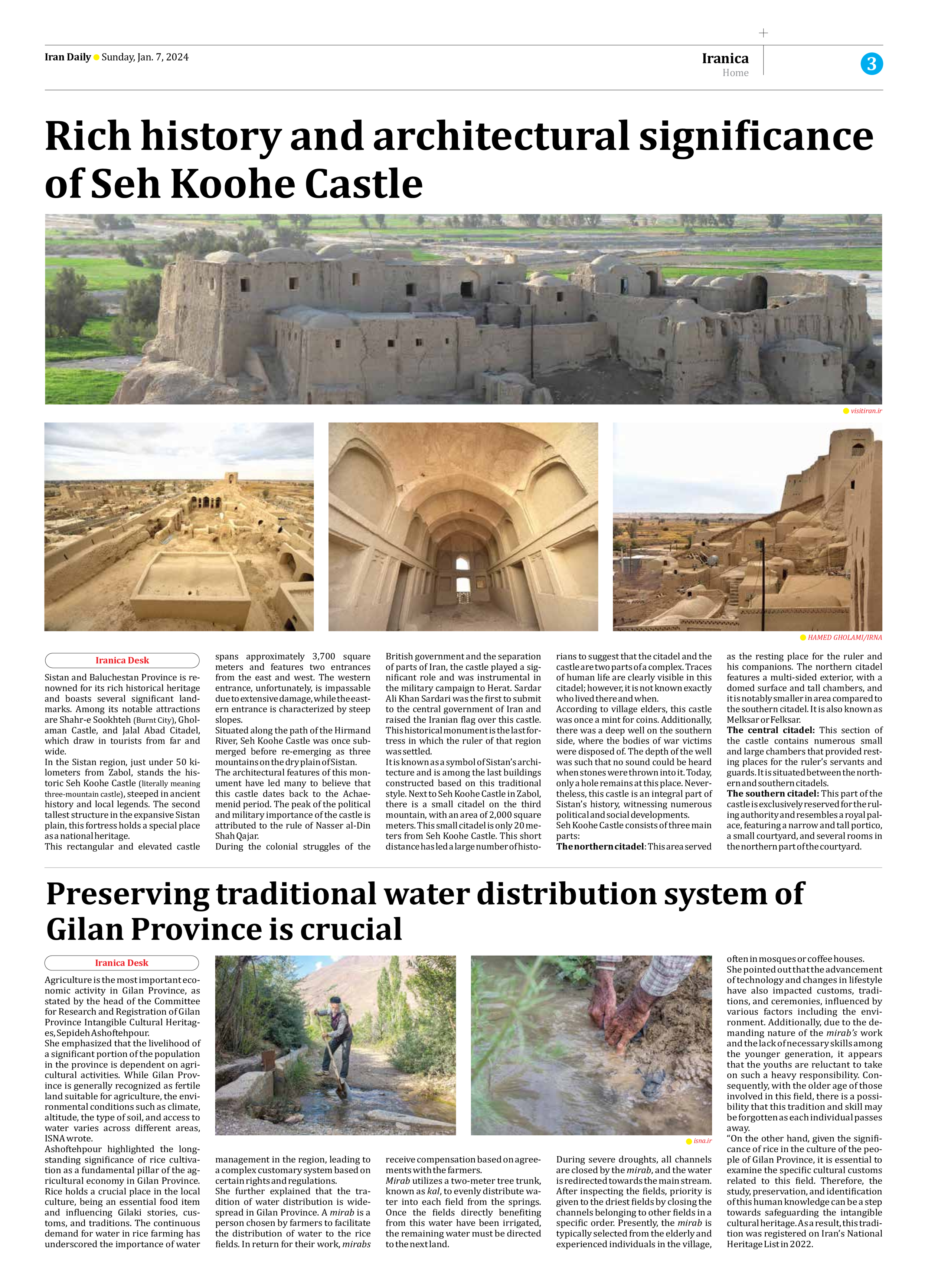
Rich history and architectural significance of Seh Koohe Castle
Sistan and Baluchestan Province is renowned for its rich historical heritage and boasts several significant landmarks. Among its notable attractions are Shahr-e Sookhteh (Burnt City), Gholaman Castle, and Jalal Abad Citadel, which draw in tourists from far and wide.
In the Sistan region, just under 50 kilometers from Zabol, stands the historic Seh Koohe Castle (literally meaning three-mountain castle), steeped in ancient history and local legends. The second tallest structure in the expansive Sistan plain, this fortress holds a special place as a national heritage.
This rectangular and elevated castle spans approximately 3,700 square meters and features two entrances from the east and west. The western entrance, unfortunately, is impassable due to extensive damage, while the eastern entrance is characterized by steep slopes.
Situated along the path of the Hirmand River, Seh Koohe Castle was once submerged before re-emerging as three mountains on the dry plain of Sistan.
The architectural features of this monument have led many to believe that this castle dates back to the Achaemenid period. The peak of the political and military importance of the castle is attributed to the rule of Nasser al-Din Shah Qajar.
During the colonial struggles of the British government and the separation of parts of Iran, the castle played a significant role and was instrumental in the military campaign to Herat. Sardar Ali Khan Sardari was the first to submit to the central government of Iran and raised the Iranian flag over this castle. This historical monument is the last fortress in which the ruler of that region was settled.
It is known as a symbol of Sistan’s architecture and is among the last buildings constructed based on this traditional style. Next to Seh Koohe Castle in Zabol, there is a small citadel on the third mountain, with an area of 2,000 square meters. This small citadel is only 20 meters from Seh Koohe Castle. This short distance has led a large number of historians to suggest that the citadel and the castle are two parts of a complex. Traces of human life are clearly visible in this citadel; however, it is not known exactly who lived there and when.
According to village elders, this castle was once a mint for coins. Additionally, there was a deep well on the southern side, where the bodies of war victims were disposed of. The depth of the well was such that no sound could be heard when stones were thrown into it. Today, only a hole remains at this place. Nevertheless, this castle is an integral part of Sistan’s history, witnessing numerous political and social developments.
Seh Koohe Castle consists of three main parts:
The northern citadel: This area served as the resting place for the ruler and his companions. The northern citadel features a multi-sided exterior, with a domed surface and tall chambers, and it is notably smaller in area compared to the southern citadel. It is also known as Melksar or Felksar.
The central citadel: This section of the castle contains numerous small and large chambers that provided resting places for the ruler’s servants and guards. It is situated between the northern and southern citadels.
The southern citadel: This part of the castle is exclusively reserved for the ruling authority and resembles a royal palace, featuring a narrow and tall portico, a small courtyard, and several rooms in the northern part of the courtyard.







